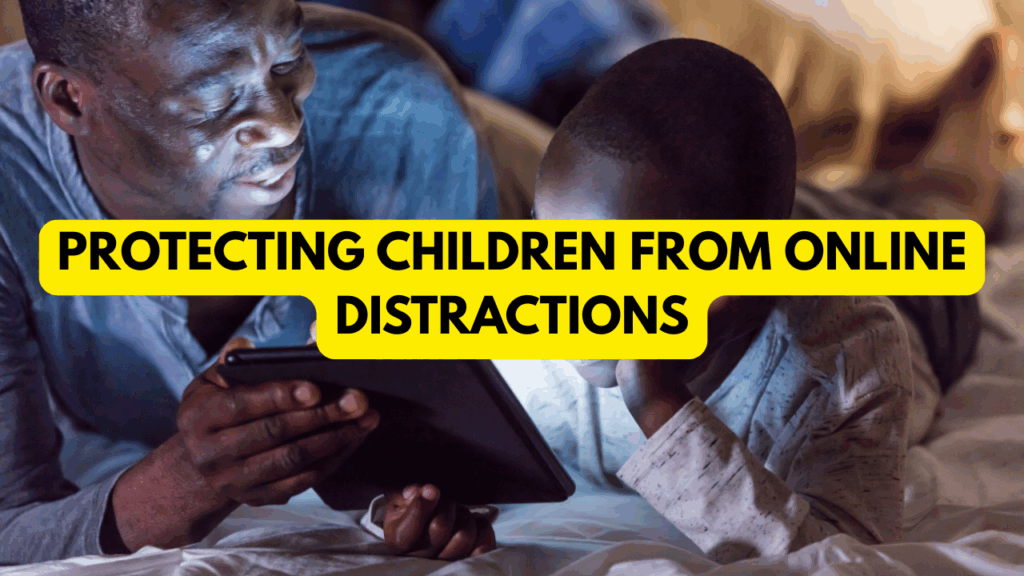
In a world where children are surrounded by screens, social media, and endless notifications, online distractions have become one of the biggest hurdles to focus and productivity. Whether it’s homework, family time, or simply resting, kids often find it hard to pull away from the digital pull of games, videos, and apps. For parents, the challenge is not only limiting distractions but also guiding children to use technology wisely.
This article explores practical strategies, tools, and routines to protect children from online distractions while nurturing healthy digital habits.
Why Online Distractions Are a Concern
Children today are growing up in an environment where digital engagement is constant. While online tools and apps can be educational, distractions such as excessive gaming, endless scrolling, and constant notifications can:
- Reduce attention span
- Affect academic performance
- Interfere with sleep and rest
- Limit creativity and offline play
- Cause stress or anxiety
Understanding these risks is the first step toward creating a balanced digital lifestyle for kids.
Practical Strategies to Reduce Online Distractions
1. Set Clear Boundaries
Establish tech-free times and zones at home, such as during meals, study sessions, or before bedtime. Kids are more likely to follow rules when boundaries are consistent.
2. Use Parental Control Tools
Apps like Qustodio, Bark, or Family Link help parents block distracting websites, set time limits, and monitor usage. These tools empower parents to create a safer online environment.
3. Teach Self-Regulation
Instead of only imposing restrictions, encourage children to recognize when they are distracted. Discuss how distractions affect their goals, teaching them self-discipline.
4. Encourage Offline Activities
Balance digital time with activities like outdoor play, art, sports, and reading. A rich offline life naturally reduces dependency on screens.
5. Lead by Example
Children observe parents closely. Limiting your own screen use and engaging in family activities without phones sets a positive example.
Tools and Techniques to Help Kids Stay Focused
- Website Blockers – Tools like Freedom or Cold Turkey can block distracting websites during study hours.
- Focus Apps – Apps like Forest gamify concentration by rewarding kids for staying off devices.
- Timers – Using a Pomodoro timer (25 minutes study, 5 minutes break) keeps children productive.
- Device-Free Zones – Bedrooms and dining areas should remain screen-free to prevent late-night distractions.
Table: Common Online Distractions and Solutions
| Online Distraction | Impact on Kids | Solution for Parents |
|---|---|---|
| Social media scrolling | Reduced attention, anxiety | Set daily usage limits, encourage journaling |
| Gaming | Excessive screen time | Limit playtime, introduce offline board games |
| YouTube/Streaming | Delays homework, sleep loss | Set content filters, enforce study-first rule |
| Constant notifications | Breaks focus constantly | Turn on “Do Not Disturb” during study hours |
| Online ads & pop-ups | Exposure to unwanted content | Use ad blockers and safe browsing tools |
Creating a Balanced Digital Routine
- Morning routine without devices: Encourage kids to start the day tech-free.
- Homework before entertainment: Set priorities to reduce procrastination.
- Daily time caps: 1–2 hours of recreational screen time is usually enough for children under 12.
- Digital detox days: Dedicate one day a week to offline activities.
Overview Table
| Aspect | Parent’s Role | Child’s Benefit |
|---|---|---|
| Screen-time rules | Establish tech-free times | Improved focus, stronger routines |
| Parental controls | Use apps to monitor & block distractions | Safer and healthier online use |
| Offline engagement | Provide alternatives like sports, art | Builds creativity and social skills |
| Positive role modeling | Show mindful screen habits | Encourages imitation of good behavior |
| Focus tools | Introduce timers & blockers | Helps kids learn time management |
| Communication | Talk about online risks | Boosts awareness and self-regulatio |
Final Thoughts
Protecting children from online distractions isn’t about banning devices altogether—it’s about teaching balance and responsibility. By combining clear rules, smart tools, and healthy offline habits, parents can help children thrive in the digital world without being consumed by it.
With consistent guidance, children can develop the ability to focus, self-regulate, and use technology as a tool for learning rather than distraction.
3 Quick FAQs
Q1. How much daily screen time is healthy for kids under 12?
Experts recommend no more than 1–2 hours of recreational screen time per day.
Q2. Should parents monitor every online activity?
Not every detail, but parental supervision with trust-building conversations ensures safe and balanced use.
Q3. What’s the best way to keep kids focused online?
Combine parental controls with teaching self-regulation and offering engaging offline alternatives.

